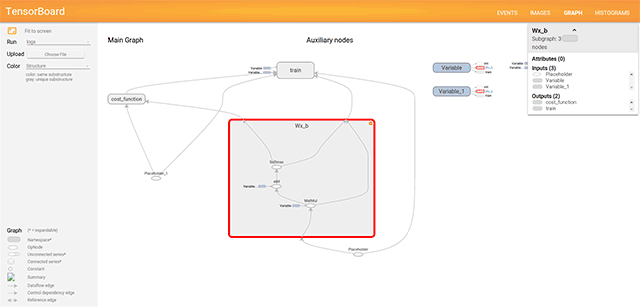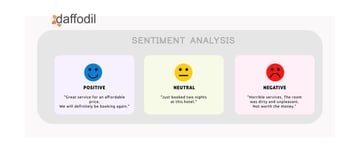
The rapid rise of Artificial Intelligence (AI) and Machine Learning (ML) technologies has led to the growing adoption of TensorFlow, an end-to-end ML platform. TensorFlow enables AI developers to accelerate ML tasks at every step of the workflow but also has certain shortcomings and understanding both sides is very essential to fully leverage this platform.
In use cases where a mobile or web application works with data with multidimensional approaches, AI or ML dependencies need to often be implemented. TensorFlow acts as an open-source AI library where all the tools that an AI developer needs can be found.
As you read on, we will examine why most of the experts from the AI development domain rely so heavily on the TensorFlow platform, and then go on to weigh the pros of working with the platform against its drawbacks.
What Is TensorFlow Used For?TensorFlow is an end-to-end AI platform and collection of dependencies created by Google that eases the computations involved in the development of ML models. |
TensorFlow was first created without having deep learning in mind in order to handle huge numerical computations. However, it turned out to be quite helpful for the development of deep learning as well, so Google made it open-source. You can leverage its AI library to develop and train cutting-edge ML models without compromising processing speed or overall performance.
The platform also enables users to adhere to best practices for data automation, model tracking, performance monitoring, and model retraining. The level of success achieved in model development depends on the use of production-level technologies to automate and monitor model training over the course of developing a service, or business process that implements the AI technology.
Customer Success Story: A data management solutions provider improves efficiency by 80% with the help of the Daffodil AI Development team.
Advantages Of Using TensorFlow
TensorFlow offers a laundry list of advantages that outweigh its prominence against several of its leading competitor AI libraries. Some of the features that give it this formidable edge are as follows:
1)Good Computational Graphs
The Graphs dashboard in TensorBoard is an effective tool for reviewing your TensorFlow model. You can rapidly study your model's structure and see if it matches your desired design by means of a conceptual graph of it. If you want to see how TensorFlow interprets your program, you may also inspect an op-level graph. The op-level graph can help you understand how to modify your model. For instance, if training is going more slowly than you anticipated, you can alter your model.

The TensorBoard Graphs Dashboard
2)Seamless Library Management
Google ensures that frequent library updates are pushed into the TensorFlow workflow and carries out quick feature extraction. All the computational layers have weights and biases that are continuously updated all the way to the end of your ML model's training process. You can access domain-specific application packages that extend TensorFlow and look through libraries to build complex models or methodologies.
3)Hands-on Debugging
There can be catastrophic occurrences along the TensorFlow program's runtime that can bring the model training processes to a standstill. TensorBoard offers a specialized dashboard for making it easier to debug all types of model bugs. There are other debugging tools to inspect runtime tensor shapes in complex programs. Bugs with a high frequency of occurrence are also accounted for so that it does not lead to large-scale downtime.
4)Scalability
A variety of computing solutions are available through Google Cloud for scaling up model deployment and training in TensorFlow. Deep Learning VMs (GA) and Deep Learning Containers (Beta) are features of TensorFlow Enterprise that make it simple to set up and scale. Both goods have been put through compatibility testing and had their performance enhanced for our broad selection of NVIDIA GPUs and our uniquely created AI processor, the Cloud TPU.
5)Keras Friendly
Engineers and researchers can fully utilize TensorFlow's scalability and cross-platform features thanks to Keras. You can export your Keras models to run in the browser or on a mobile device, and you can run Keras on TPU or on huge GPU clusters. It offers crucial building elements and abstractions for creating and delivering machine learning solutions quickly.
Disadvantages Of Using TensorFlow
While there are several ways in which TensorFlow eases the developmental pains of creating ML models, there are certain shortcomings that keep it from becoming the end-all and be-all of AI development. These are as follows:
1)Missing Symbolic Loops
TensorFlow does not have prebuilt contingencies for iterations that end up in symbolic loops. It does not implicitly expand the graph; rather, it manages the forward activations for the backdrop in different memory locations for each loop iteration, without creating a static graph on the fly with copies of the loop body subgraph.
2)Too Many Frequent Updates
Occasionally, working with TensorFlow causes your AI models to shrink as you receive background updates on a regular basis; as a result, even though your users always have the most recent version, the model's quality may suffer. Everyone will receive the most recent security updates automatically, which might seem wonderful, but there have been cases in the past where system updates have done more harm than good.
3)Homonym Inconsistency
Homonyms are provided by TensorFlow, which makes it difficult to understand and use because they have similar names but different implementations. The titles of TensorFlow's modules contain homophones, making it challenging for users to remember and apply. Adopting a single name for numerous different settings causes a dilemma.
4)Limited GPU Support
Only NVIDIA and Python are supported by TensorFlow for GPU programming. It has no additional support. On the other hand, TensorFlow code and tf.keras models will operate transparently on a single GPU without the need for code modifications. This is most likely a result of your system's inability to identify the CUDA and CuDNN drivers properly. Tensorflow is failing to recognize your Nvidia GPU in both situations. This may be due to a number of factors.
5)Low Implementation Speed
TensorFlow consistently takes the longest to train different types of neural networks across all hardware setups. If you actually look at the code, every method of performing convolutions ultimately uses the same code. The majority of these frameworks are only code wrappers. The TF team did an excellent job of ensuring they all use the same underlying code, and the wrappers remain simply due to the API's backward compatibility. They used to be distinct codes earlier but due to the redundancies, the overall TensorFlow framework gets slowed down.
ALSO READ: Why Does The FinTech Sector Need AIOps?
TensorFlow Expertise Can Optimize Your AI-Based Digital Solutions
Dated or legacy tools, systems, and operational methods are not enough to deliver the quality of optimized and innovative financial services that today's digitally savvy customers expect. Frameworks like TensorFlow can help you deliver top notch AI modeling solutions to make state-of-the-art applications. You can look into Daffodil's AI Centre Of Excellence (CoE) for ways in which you can optimize your AI-based solutions. To start your journey with us you can also go ahead and book a free consultation with our AI Development company today.



